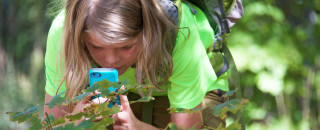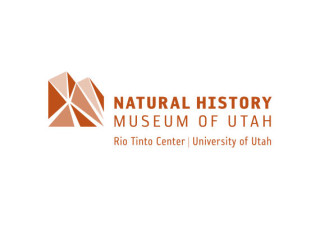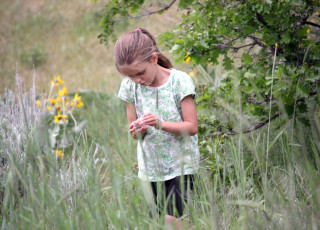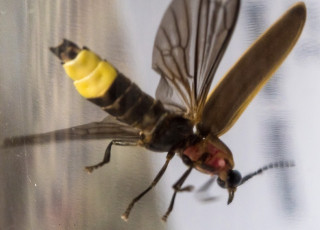Utah Joins Second Annual City Nature Challenge
SALT LAKE CITY, April 13, 2017 —Exploring and understanding the natural life and biodiversity of Utah is not merely for scientists anymore. The City Nature Challenge is a national invitation for citizens to help make meaningful contributions to the scientific community, running from April 14-18, 2017. Join with the Natural History Museum of Utah, Thanksgiving Point and the Ogden Nature Center to help gather and analyze the biodiversity and wildlife along the Wasatch Front.
Using an app called iNaturalist, the public is encouraged to observe and record information and images and upload them to the site. iNaturalist is a scientific community focusing on data collection for scientific researchers, citizen scientists and nature lovers alike. It’s engaging, interactive and participating could not be easier:
- Download the free iNaturalist app to any mobile device.
- Make observations and take photos of wild plants and animals.
- Upload photos to iNaturalist.
- Learn and interact with others in the iNaturalist community.
“The whole process is not just to collect data but to help people learn,” according to Ally Coconis, the Museum’s community outreach program specialist. “The data iNaturalist gathers is submitted and accessible to everyone and specifically used by researchers who are in need of eyes on the ground for research and education.”
Two featured gatherings will kick-off the event. First, the Museum will host a launch Friday, April 14, 2017 from noon to 3:00 p.m. Staff and volunteers will be on hand to talk with people about iNaturalist and to answer questions about the challenge.
The second featured gathering, happening on Saturday April 15, 2017, is a Bioblitz, in other words an opportunity for citizens to make as many observations as possible within a specified time period. Participants interested in the Bioblitz exploration can meet at the recently restored Fred and Ila Rose Wetland Preserve (950 W. 900 S.) on the Jordan River between 1 and 4 p.m. It’s a great way to spend time outside with family and friends.
Bringing science and community together is at the heart of this second City Nature Challenge, expanded from last year’s inaugural event held in San Francisco and Los Angeles. For more information about this year’s Challenge and all its related events visit: https://nhmu.utah.edu/challenge.
During the event, follow along on the City Nature Challenge Leaderboard to see how many observations and species participating cities are contributing. When posting to social media, use #CityNatureChallenge to connect and see what other participants and cities are capturing.
Participating Cities:
- Austin
- Boston
- Chicago (Cook County)
- Dallas / Fort Worth
- Duluth / Twin Ports
- Houston
- Los Angeles
- Miami (Miami-Dade County)
- Minneapolis / St. Paul
- Nashville
- New York
- Raleigh (Research Triangle Area)
- Seattle
- Salt Lake City (and surrounding counties)
- San Francisco
- Washington D.C. Metro Area
Partner Organizations:
- California Academy of Sciences
- Natural History Museum of Los Angeles County
- National Park Service
- Metropolitan Field Guide
- Natural History Museum of Utah
- Texas Parks & Wildlife
- Audubon Texas
- Minnesota Sea Grant
- Natural Resources Research Institute
- University of Minnesota Extension
- Chicago Academy of Sciences' Peggy Notebaert Nature Museum
- Habitat 2030
- Cumberland River Compact
- Nashville Metro Parks
- Environmental Studies at Brandeis University
- Encyclopedia of Life
- Earthwatch Institute
- MIT Senseable lab
- New England Aquarium
- Macaulay Honors College at CUNY
- Biophilic D.C.
- Virginia Master Naturalist program
- AAAS Affinity Group for Crowdsourcing and Citizen Science
- National Geographic Society
- North Carolina Museum of Natural Sciences
- NEOSEC (New England Ocean Science Education Consortium)
- Frost Museum of Science
###
About the Natural History Museum of Utah
The Natural History Museum of Utah is one of the leading scientific research and cultural institutions in the country. Established in 1963, the Museum’s collections contain over 1.5 million objects and offer innovative exhibitions and educational programs to thousands of residents and visitors each year, including traveling and permanent exhibits, special events and other programs. With more than 250,000 visitors a year, the Museum also offers a variety of outreach programs to communities and schools throughout Utah, reaching every school district in the state annually. The Museum has an active scientific research program with more than 30 scientists and 10 field expeditions each year.



